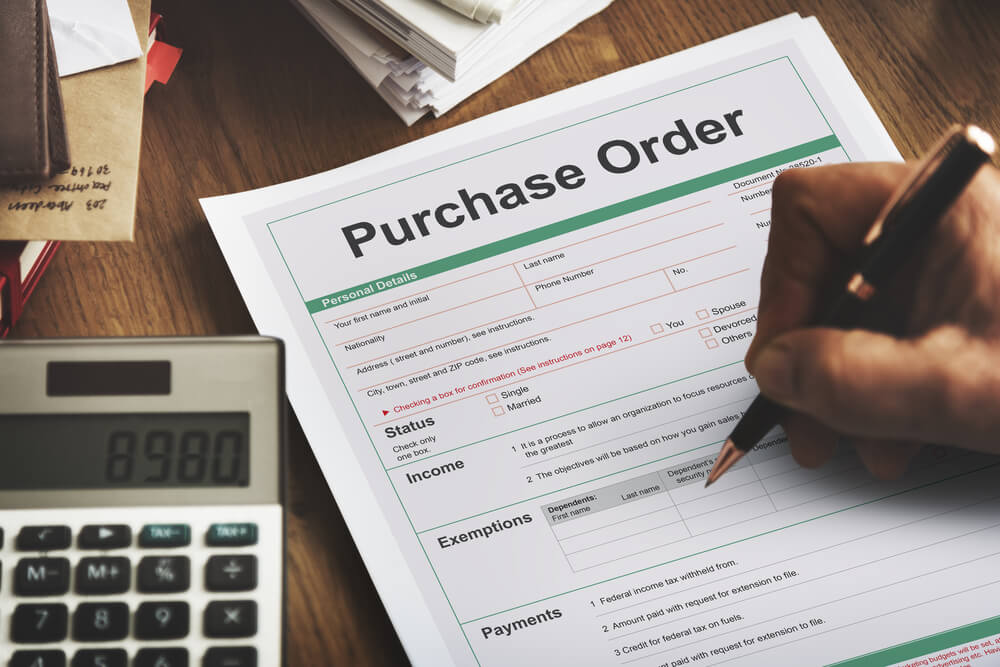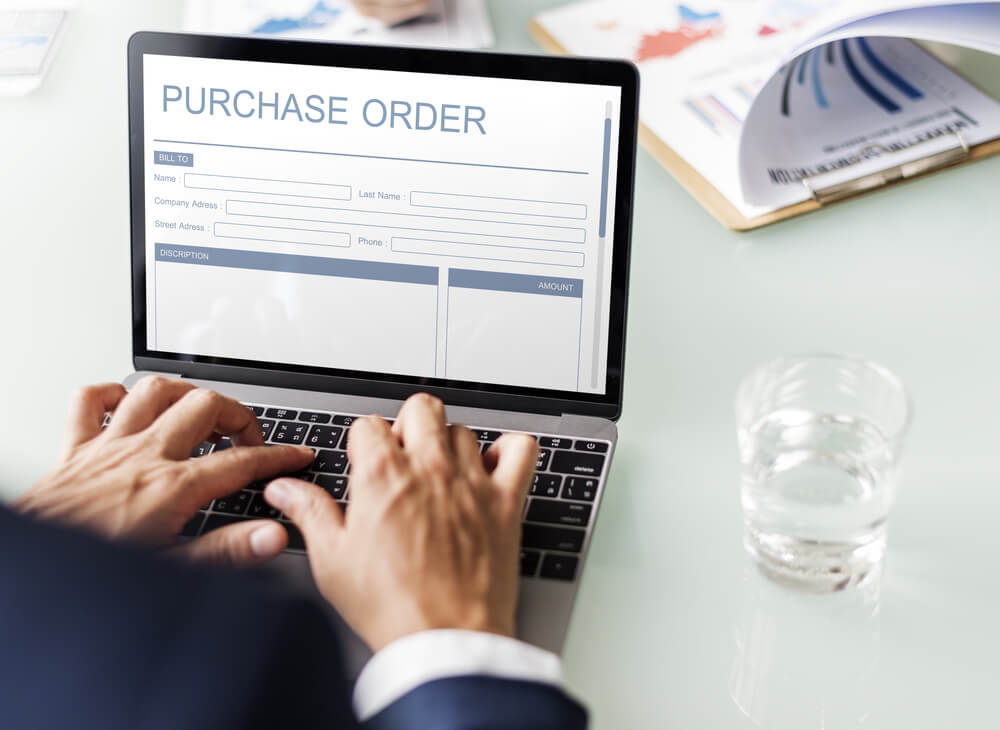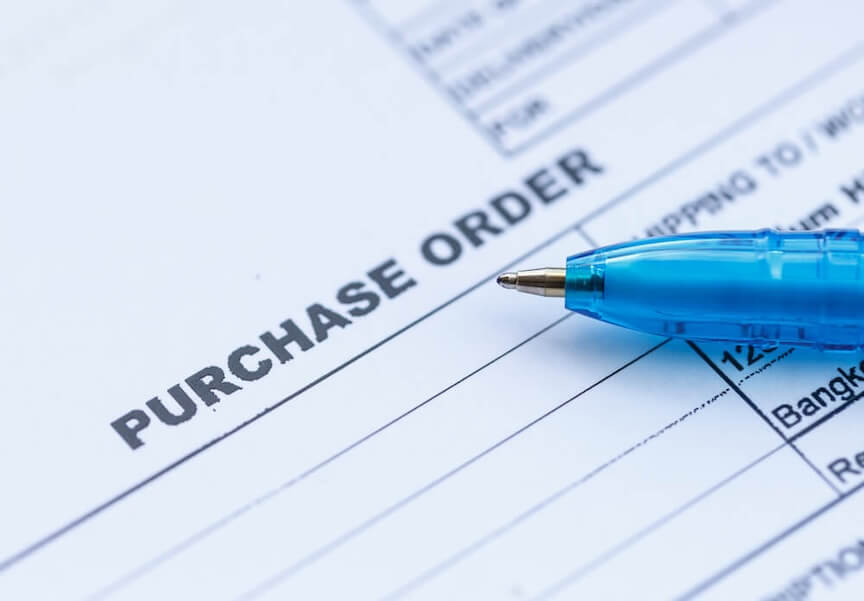Many businesses frequently order supplies from merchants and other third-party vendors. Typically, a business representative must fill out a purchase order to receive items and goods from the specified vendor. There is often considerable confusion surrounding how a purchase order works, what it is, and how to complete it. To better assist you and your business in your endeavors, we’ve gathered the information necessary to answer common questions regarding purchase orders. This way, you’ll be able to fulfill or request orders effectively, saving you time, effort, and frustration.
Please note that some businesses may require specific information to process your purchase order. You’ll want to communicate with your vendor to ensure that you have all the information necessary to place your purchase order request. The more information you provide about your order, the more likely you are to be satisfied with your purchase.
What Is a Purchase Order?
A purchase order is a document sent from the buyer to the vendor. They contain the details necessary for purchasing supplies and goods offered by the vendor. An official purchase order typically contains a unique number, located in the right-hand corner of the page, which allows the buyer to track the status of the purchase. The buyer will be able to track their request from placement to completion.
Business owners and vendors alike should be aware that a purchase order constitutes a legally binding contract. Purchasers and vendors should ensure they have a thorough understanding of the terms and conditions outlined in the purchase order. They will outline when cancellation of a purchase order is acceptable, when a buyer is to be issued a refund, and what to do in the event of a lost or misplaced item. Purchase orders also contain information related to the supplier, including their name, address, and contact details. Additionally, there is typically a section on the purchase order labeled “Terms” that provides the seller with the timeframe in which they must respond and fulfill the purchase request. On the right-hand side, you will find the delivery address and other information related to the purchaser, including a phone number in case the vendor needs to contact the buyer.
Below this section is the delivery date for the items. Any specifying information, such as requester, approver, and department, will also be listed on this line. Immediately below this section, there is a notes space. Here, the buyer can leave any important memos for the supplier. For instance, they may request that if a specific item is out of stock, the vendor should provide them with a different product line instead.
Lastly, there is the itemized order list. In this section, the buyer should carefully review and complete all relevant information. Ensuring that the document includes all relevant details, such as item codes and quantities, will help prevent order delays, confusion, and incorrect products. Purchase order errors must be corrected in-house with the vendor. Therefore, the buyer needs to reach out as soon as possible to attempt those corrections. Additionally, corrections will be subject to the terms set out in the purchase order.

How Do Purchase Orders Work?
The purchase order outlines the details of an order submitted by a business or individual. Purchase orders also outline the amount the buyer agrees to pay for each item in the order. Additionally, purchase orders enable buyers to purchase items from suppliers that are already on their account. Vendors will send order shipments prior to receiving payment for the order. The purchase order becomes a guarantee of payment upon receipt.
Another way purchase orders work is as a form of inventory and financial management. Vendors can review purchase orders to determine the number of orders received, items shipped, and items in stock. They can have a more accurate estimate of available inventory for completing further orders.
To submit a purchase order, the buyer must prepare the order through the purchasing department. Typically, this is an electronic software platform that sends the documents to the vendor electronically. The information for the purchase order (listed above) must be completed as accurately as possible. The purchaser will need to fill in the available fields with the applicable information and send the form through the purchasing platform.
Once submitted, an “in-progress” purchase order is generated. This status will remain until the vendor receives each of the ordered items at their warehouse. The vendor scans these items, which allows the system to match them to the proper order and update the status. Depending on the terms of the order, it will be updated to either a “processed” status or a “requires payment” status. The buyer must then complete any required responsibilities. The order is then shipped to the buyer, who will review and pay for it upon receipt.

Does a Purchase Order Need to Be Signed?
Yes, a purchase order does need to be signed as it is a legally binding contract between two parties. Typically, the purchase order is initially submitted and signed by the purchaser. The vendor receives the order and has the option to approve or deny it. If the vendor approves the order, they will sign it. The purchase order becomes a legal contract at this point in time. This means that both the purchaser and the vendor are legally obligated to fulfill their respective parts of the agreement.
If a purchase order is not signed, it becomes null and void. Without proper approval from both parties, vendors will not ship orders. The reason for this is largely due to the fact that the vendor cannot guarantee receipt of payment for the order. Some companies, however, do accept purchase requests. These documents do not require a signature. However, they do not guarantee the receipt or payment of a purchase.
If a company chooses to utilize purchase requests, the vendor will often send an invoice once they have shipped the product, detailing the total charges owed for the order. This invoice serves as a collection document and can, therefore, be used to establish credit and for credit-reporting purposes between businesses.
While understanding and completing a purchase order may initially be confusing, once you understand how they work, they are an effective tool. Both buyers and purchasers receive protection throughout the entire purchase process. Each party is also aware of the expectations in regards to order status, payment, and delivery of the order.
If you or your business would like more information about utilizing a purchase order, or you would like to learn how to get started using them for your order placements, we encourage you to contact our team at Checkissuing.com by phone or online. We will be happy to provide you with the information you need to begin using purchase orders. We can also provide helpful information, including guided walkthroughs on how to properly fill and file purchase orders. Whether you need step-by-step instructions or financial information, check issuing and printing, we are ready and happy to help.
Last updated: September 2025

